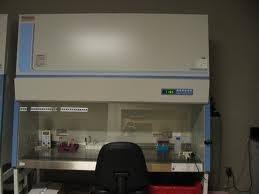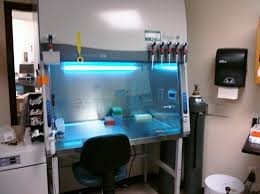Laminar Flow Hoods
Laminar Flow Hoods are used to protect personnel, samples and the environment from exposure to biological hazards and cross contamination. Laminar flow hoods are divided into two categories: biological safety cabinets and laminar flow clean benches. All laminar flow hoods use high-efficiency particulate air (HEPA) filters to sterilize and remove particulates from the air. However, these containments differ in the level of protection provided to the user, the environment and the sample.
Laminar Flow Clean Benches
A laminar flow clean bench provides a space to work with a sample or product, where it will be protected from contamination by particulates such as microorganisms. The basic laminar flow clean bench does not protect the user from chemically hazardous or infectious materials, including particulate or volatile hazards. For this reason, when a sample, user and the environment need to be protected, a biosafety cabinet should be utilized.

Biosafety Cabinets
A Biosafety Cabinet is an enclosed, ventilated hood or workspace that allows for the safe handling of pathogens, contaminants or other potentially hazardous materials. The primary purpose of a biosafety cabinet is to protect the operator and the surrounding environment from biological contaminants and other hazardous materials. These cabinets are designed to provide various levels of protection. The proper class and type must be selected to match the need for the specific application and level of bio-containment required.

Annual Inspection and Certification
On an annual basis, an external company inspects and certifies all Biological Safety Cabinets (BSC) and Laminar Flow Clean Benches (LFCB). These containment devices must be decontaminated prior to moving and re-certified prior to use after a move. Contact EHS before moving a BSC or LFCB to ensure proper certification. Only certified biosafety cabinets and laminar flow hoods are considered safe to use, and may not be used if the certification is not up to date. Contact EH&S to obtain a copy of the most recent inspection and certification.














